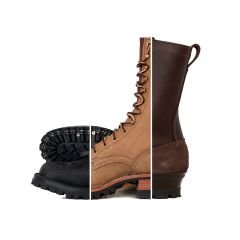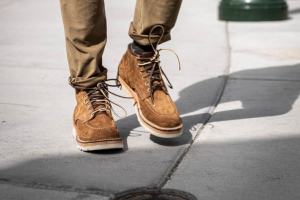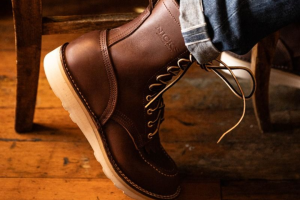How To Stretch Leather Boots
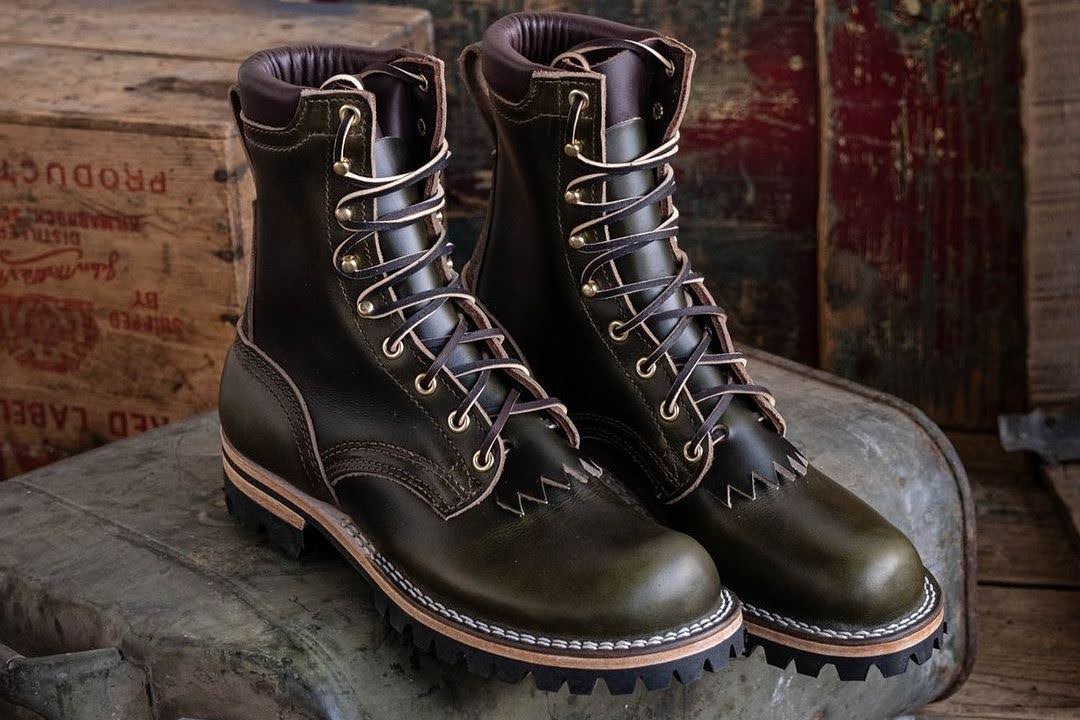
Key Takeaways:
- Proper Preparation: Before stretching your leather boots, it's essential to clean and condition them. This prepares the leather for effective stretching and prevents damage during the process.
- Safe Stretching Techniques: Utilize specialized tools such as boot stretchers for targeted and safe stretching, and consider natural methods like the freezing technique for minor adjustments. These techniques ensure that the boots are stretched evenly and maintain their structural integrity.
- Post-Stretch Care: After stretching, regular conditioning and proper storage are vital to maintain the boots' shape and prevent leather from drying out. Use boot trees and keep boots in a controlled environment to ensure they retain their new fit and remain in good condition.
At Nicks Boots, we excel in creating durable, high-quality leather boots that offer a comfortable fit. With our extensive experience in the field, we have a deep understanding of leather care and upkeep.
Stretching leather boots can be essential for achieving the perfect fit and enhancing comfort. If your new boots feel a bit snug or you've got an older pair that needs adjusting, this guide will show you how to carefully stretch the leather without damaging it.
In this piece we’ll provide crucial tips on how to properly stretch your leather boots. Whether you’re softening a new pair or modifying an older one to enhance comfort, we will walk you through the preparation steps, effective stretching techniques, and care advice to ensure your boots maintain the comfort and longevity you rely on from our brand.


Understanding Leather Stretching
The Nature Of Leather
Leather's inherent stretchiness is a feature that evolves from its organic makeup, primarily collagen fibers, which adapt over time. As you wear your boots, the heat and moisture from your feet naturally cause the leather to expand slightly, creating a customized fit. This process highlights leather's unique ability to balance durability with flexibility. It's this characteristic that makes leather an ideal material for high-quality footwear that shapes to the individual's foot.
Factors Influencing Leather Elasticity
The elasticity of leather can vary significantly based on its origin, the layer of the hide used, and its treatment during the tanning process. Thicker, full-grain leathers tend to offer more resistance to stretching, while softer, thinner leathers may stretch more readily but be less durable. Additionally, the moisture content and the leather's age can affect how much and how easily it stretches. Knowing these factors helps in applying the correct stretching techniques to avoid overstretching.
The Importance Of Safe Stretching
Approaching leather stretching with an informed perspective is essential to maintain the integrity of your boots. Incorrect stretching methods can lead to overstretched leather, which weakens the material and causes irreparable damage such as tearing or permanent deformities. Safe stretching not only ensures the longevity of the leather but also preserves its aesthetic qualities, preventing unsightly wrinkles or loose fits. Educating yourself on proper techniques is crucial for achieving a comfortable yet durable fit.
Looking for the perfect fit? Visit Nicks Boots to explore our selection of high-quality leather boots and professional stretching tools. Get everything you need to ensure your boots fit comfortably and look great. Shop now and step into comfort with style!
Preparations Before Stretching Your Boots
Clean Your Boots Thoroughly
It's essential to start with a clean surface to ensure effective stretching. Use a soft brush and a suitable leather cleaner to gently remove any dirt or buildup from the leather's surface. This not only prepares the leather for stretching but also prevents any abrasive particles from causing scratches or damage during the process. Make sure the boots are completely dry before proceeding to the next step.
Assess The Fit And Tight Areas
Wear your boots around the house to determine where they feel the tightest, focusing on areas like the toe box, heel, or sides. Mark these areas lightly with chalk if necessary, as this will guide you in where to apply the stretching tools or techniques specifically. Understanding these tight spots ensures that the stretching is effective where it's needed most, avoiding unnecessary strain on the correct-fitting parts.
Condition The Leather
Conditioning the leather is a crucial step to soften it and enhance its elasticity before stretching. Apply a generous amount of high-quality leather conditioner with a soft cloth, working it into the leather in circular motions. Allow the conditioner to absorb fully, which not only aids in stretching but also keeps the leather hydrated, preventing cracks and splits. This step also ensures the leather responds better to stretching, achieving a smoother and more uniform expansion.
Protect The Interior
Insert a boot stretcher or rolled-up newspapers into the boot to maintain its shape during the stretching process. This helps ensure that the stretching is even and maintains the boot's form, particularly important for maintaining comfort and functionality. If using a boot stretcher, adjust it gradually to avoid overstretching the leather. This internal support is key in achieving the desired stretch without compromising the boot's structural integrity.
Techniques To Stretch Leather Boots Safely
Using A Boot Stretcher
A boot stretcher is an effective tool for gradually widening tight areas in leather boots. Begin by inserting the stretcher into the boot, focusing on the areas you've marked as particularly snug. Adjust the stretcher to apply a mild pressure, which will expand the leather without causing stress or damage. Over a period of 24-48 hours, gradually widen the stretcher, checking frequently to ensure that the leather is not overstretched. This controlled approach helps achieve a custom fit while preserving the boot's structure and durability.
Conditioning And Manual Stretching
Conditioning the leather softens it, making manual stretching more effective. After applying conditioner, use your hands to gently pull and massage the tight spots while the leather is still supple. Wearing the boots around your home can also aid in this process, as the movement and body heat from your feet help the leather stretch naturally. This method is particularly useful for targeting specific areas that need a bit more room, providing a precise stretch where it's most needed.
Using Freezing Techniques
The freezing technique is a unique way to stretch leather boots without mechanical tools. Fill sealable bags with water and place them into the tight sections of your boots. As the water freezes and expands into ice, it will gently push against the leather, causing it to stretch. Monitor the process carefully to prevent the ice from overstressing the leather, especially at the seams. This method is safe and effective, especially for minor adjustments in boot width.
Heat Application
Applying gentle heat can temporarily increase leather's elasticity, making it easier to stretch. Using a hairdryer, evenly distribute warm air over the tight sections of your boots while they are being stretched by either wearing them or using a boot stretcher. Move the hairdryer constantly to avoid overheating and potentially damaging the leather. Once the leather is warm, manually stretch these areas or let the stretcher do the work. After stretching, allow the boots to cool and set in their new shape.
Tips For Maintaining The Right Fit
Regular Conditioning
To maintain the optimal condition of leather boots, regular application of a quality leather conditioner is essential. This practice not only keeps the leather hydrated and flexible but also preserves its natural elasticity, crucial for maintaining a comfortable fit. Over time, conditioned leather resists drying and cracking, which can compromise both comfort and durability. Make it a routine to condition your boots every few months or more frequently depending on usage.
Proper Storage
Proper storage is vital to prolong the life and maintain the shape of leather boots. Always store your boots in a cool, dry place away from direct sunlight, which can bleach and weaken the leather. Using boot trees can help maintain the shape of the boots, preventing creases and bending that can alter the fit. This helps ensure that the boots remain in perfect form and fit each time they are worn.
Wearing The Right Socks
The thickness and type of socks worn with leather boots can significantly affect their fit and comfort. Thick socks are ideal for filling out boots that have stretched slightly, providing additional cushioning and support. On the other hand, thinner socks might be better for newly stretched boots, ensuring they don’t feel too snug. Always consider the fit of your boots when selecting socks to ensure maximum comfort and proper fit.
Periodic Assessments
Periodically assessing the fit of your boots is important as leather can continue to stretch and conform to your feet over time. Check the fit every few months to determine if adjustments such as additional stretching, insoles, or different lacing techniques are needed. This regular evaluation helps you adapt to changes before they become problematic, maintaining the ideal fit of your boots. Such attentiveness ensures your boots remain comfortable and functional over their lifespan.
Avoid Overloading
To prevent your leather boots from deforming or wearing out prematurely, avoid wearing them excessively or for inappropriate activities. Rotating your footwear and using boots designed specifically for certain conditions or tasks can extend their life and maintain their shape. This cautious approach helps preserve the integrity and aesthetics of the leather, ensuring that the boots serve you well for many years. Remember, even well-stretched boots need rest and proper care.
Common Mistakes To Avoid
- Overstretching The Leather - When stretching leather boots, it's crucial to monitor the process closely to avoid overstretching. Excessive stretching can weaken the leather's structure, leading to a fit that's too loose and irreversible damage. Incremental adjustments allow you to control the stretch, ensuring the boots conform comfortably to your feet without exceeding the leather's capacity to recover.
- Using Inappropriate Tools - Using the wrong tools for stretching can lead to uneven pressure on the leather, causing stretches or tears that are unsightly and weaken the material. Always opt for professional-grade leather stretchers or devices specifically designed for the task. Improvised methods can seem convenient but often result in damage that shortens the lifespan of the boots.
- Neglecting Leather Care Post-Stretch - Maintaining leather boots after stretching them is as important as the stretching process itself. Regular conditioning and cleaning not only preserve the leather's quality but also help the boots retain the new shape achieved through stretching. Ignoring post-stretch care can lead to dry, cracked leather that deteriorates faster than properly maintained boots.
- Ignoring Manufacturer’s Instructions - Disregarding the manufacturer's care instructions can lead to practices that damage your boots. Each type of leather and boot design may require specific care strategies to maintain its unique qualities and durability. By following the provided guidelines, you ensure that your stretching and maintenance efforts are appropriate and effective for your specific pair of boots.
Final Thoughts
Stretching leather boots properly enhances comfort and maintains the longevity and appearance of your footwear. At Nicks Boots, we emphasize the importance of using correct stretching methods and regular maintenance to ensure that your boots adapt to your feet without losing their durability or aesthetic quality. By understanding leather’s natural properties and treating it with care, you can achieve a custom fit that preserves the boots' structural integrity and extends their wearable life.
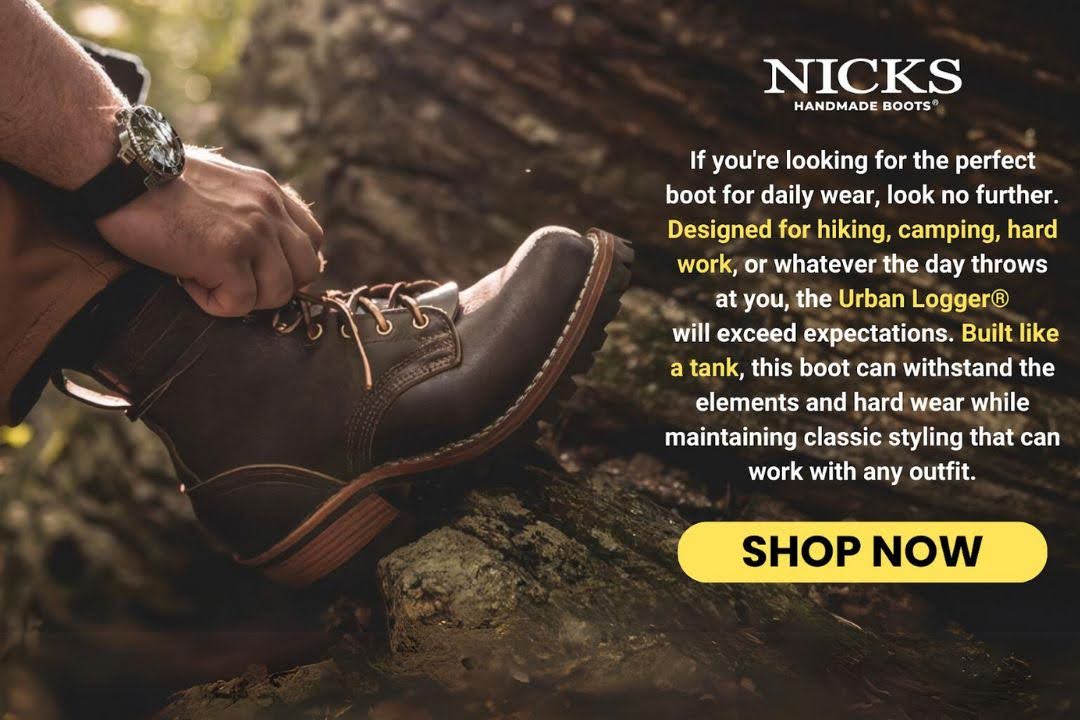

Read also:
Frequently Asked Questions About How To Stretch Leather Boots
What is the best way to determine where my leather boots need stretching?
Wear your boots at home to pinpoint areas that feel tight. Mark these specific spots with chalk to target them during the stretching process. This approach ensures effective stretching where it's needed most without straining properly fitting areas.
Can I use a hairdryer to stretch leather boots?
Yes, a hair dryer can be used to help stretch leather boots by increasing the leather's elasticity temporarily. Apply warm air evenly while the boots are being stretched to soften the tight sections. Be careful to keep the hair dryer moving to avoid overheating and damaging the leather.
How often should I condition my leather boots to maintain their stretch?
Conditioning leather boots regularly is crucial to maintaining their stretch and overall health. Aim to condition your boots every few months, or more frequently if you wear them often. This helps preserve the leather's elasticity and prevents drying and cracking.
What should I avoid doing to maintain the stretch of my leather boots?
To maintain the ideal stretch, avoid overstretching the leather, using inappropriate tools, or neglecting care after stretching. Always follow the manufacturer's care instructions to ensure proper treatment. These practices help preserve the boots' durability and appearance.
Is it possible to stretch boots that are made of a mix of leather and synthetic materials?
Stretching boots made of leather and synthetic materials can be challenging due to different material properties. Consult the manufacturer's guidelines or seek professional advice for best results. Synthetic materials generally have less elasticity compared to leather.
What type of sock should I wear to help with the stretching process?
Wearing thicker socks can assist the stretching process by providing additional pressure and filling out the boots. Select socks based on your comfort level and the amount of stretch needed. Adjust sock thickness as the boots begin to stretch and conform to your feet.
Can stretching damage my leather boots?
Incorrect stretching techniques can permanently damage leather boots by causing overstretching or tearing. It is crucial to stretch gradually and monitor the process closely. Incremental adjustments ensure that the leather conforms to the feet without losing its integrity.
What are some natural methods to stretch leather boots?
The freezing technique is a natural method to stretch leather boots gently. Fill sealable bags with water, place them in the tight areas of your boots, and freeze. As the water expands into ice, it will stretch the leather safely and effectively.
How do I know if I’ve overstretched my leather boots?
Overstretched boots often fit too loosely and provide insufficient support. Regularly check the fit during the stretching process to avoid overdoing it. If boots become too loose, they may not recover their original shape.
What is the best storage method to maintain the shape of stretched boots?
Proper storage is essential to maintain the shape and condition of stretched leather boots. Use boot trees and store your boots in a cool, dry place away from direct sunlight. This helps prevent deformation and maintains the boots' longevity.

